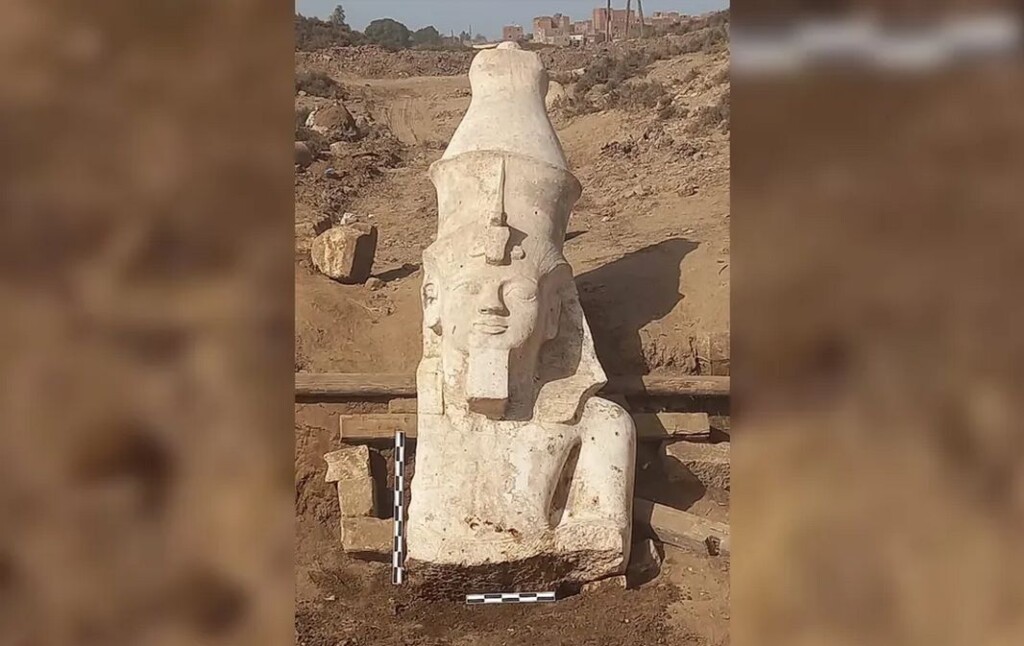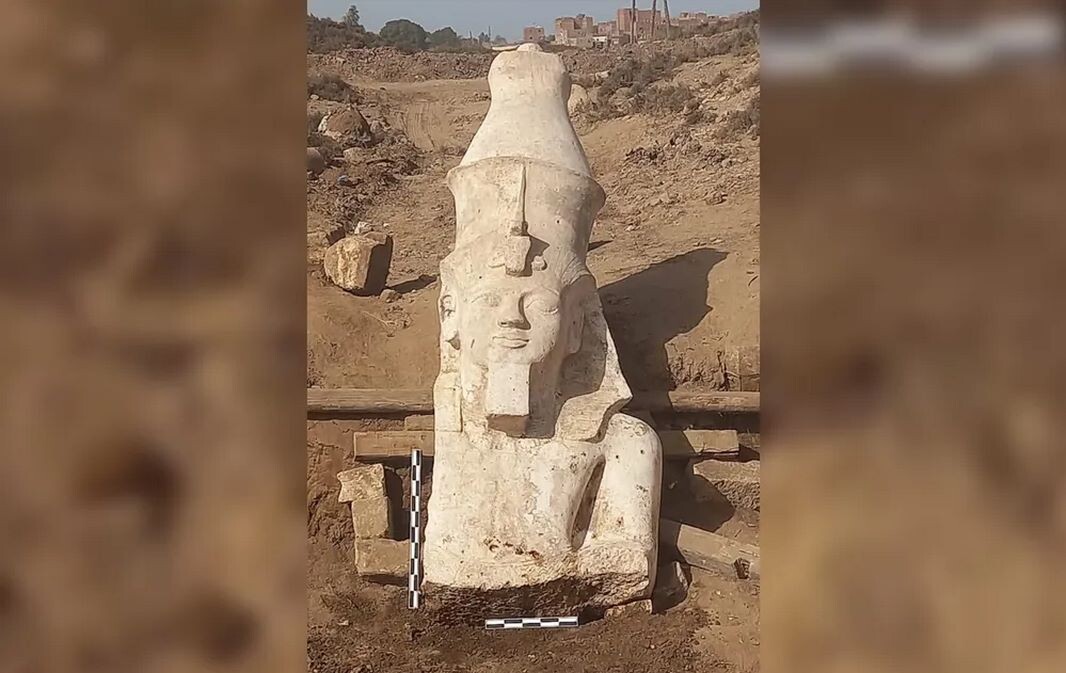
Nearly 100 years after the legs of a giant statue of Pharoah Ramses II were found in Egypt, archaeologists have finally located his better half.
It’s not his wife, but rather his torso, head, and shoulders, which together fit perfectly with the lower half kept in a museum for decades.
With both halves together, the statue towers over mere mortals at 23 feet tall, and depicts perhaps the greatest of all Egyptian rulers in a sitting position with a crown shaped like a cobra—a symbol of kingship. The back of the statue is covered in hieroglyphs that list his many titles.
In a time where lifespans averaged 40-50 years if you survived childhood, Ramses the Great lived into his 90s and outlived almost all of his dozens of children and even some of his nearly 100 grandchildren.
Ushering in a golden age across the 19th Dynasty’s sprawling kingdom that stretched from Sudan to Syria, his glory is reflected in monuments and temples—as well as statues like the newly-reunited one that was originally found in 1930 by the German archaeologist Günther Roeder.
Dr. Adel Okasha, head of the Central Administration of Antiquities of Central Egypt, said that the mission began excavations in the region of Ashmunin during the past year in an attempt to locate the religious center of the ancient city of Hermopolis during the era of the New Kingdom until the Roman era, where a number of temples, including one for Ramses II, are believed to be preserved, according to a statement from the Ministry of Tourism and Antiquities.
MORE EGYPTOLOGY: Archaeologists Unearth Ancient Egyptian Tombs With Colorful Mummy Masks and Treasured Statues
“Though we have not found the complex we were initially looking for, a statue of such importance is a sign that we are digging in the right place,” Dr. Okasha, told the National.
The city of Ashmunin in ancient Egypt was known as Khomeno, where it was the seat of worship of the Egyptian Thamun. It later became known in the Greco-Roman era as Hermopolis Magna, and was the center of worship of the god Thoth, and the capital of the fifteenth Egyptian region.
THE DISCOVERY OF ATEN: Archaeologists Discover ‘Dazzling’ 3,000-Year-old Egyptian City, Left ‘As if it were yesterday’
The excavation season is now closed, per the statement, and along with discovering the upper half of the king’s statue, they also succeeded in restoring and reinstalling the huge granite columns on the northern side of the Ashmunin basilica, which was built on the ruins of a Ptolemaic temple.
SHARE This Latest Big Find From The Land Of The Nile…




















